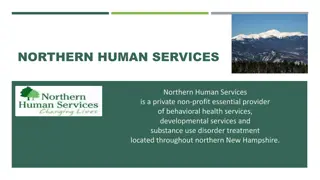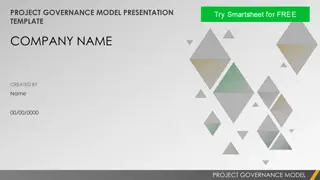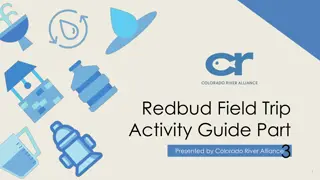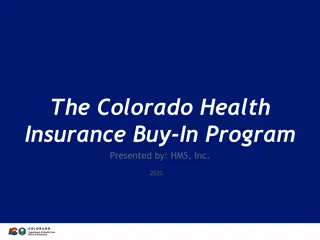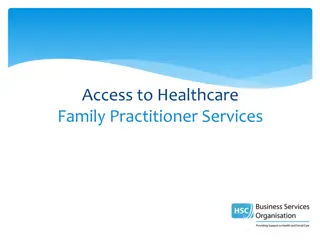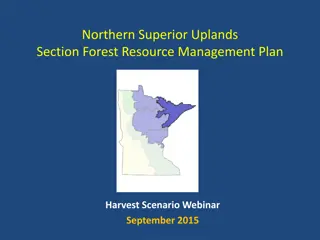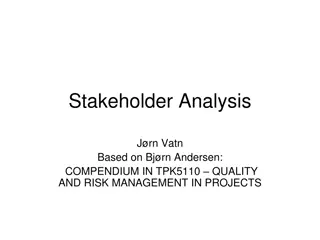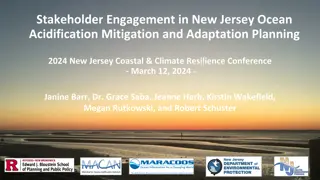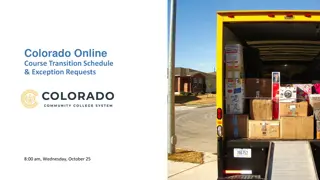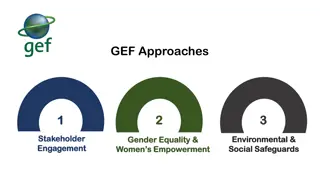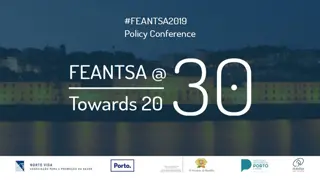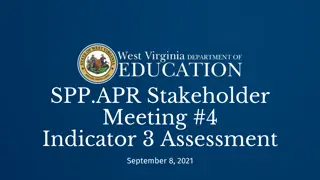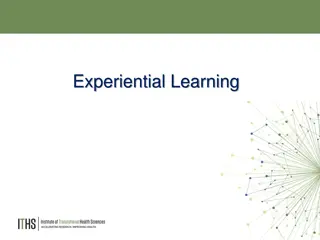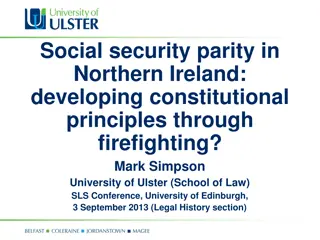Stakeholder Engagement in Northern Colorado Water
Explore stakeholder engagement, collaboration, and water management in Northern Colorado, focusing on the Cache la Poudre watershed. Discover the various uses of the watershed, key groups involved in its preservation, and ongoing projects like the Northern Integrated Supply Project. Join the conversation on balancing diverse needs, addressing challenges, and promoting inclusive discussions for sustainable water resource management.
Download Presentation

Please find below an Image/Link to download the presentation.
The content on the website is provided AS IS for your information and personal use only. It may not be sold, licensed, or shared on other websites without obtaining consent from the author.If you encounter any issues during the download, it is possible that the publisher has removed the file from their server.
You are allowed to download the files provided on this website for personal or commercial use, subject to the condition that they are used lawfully. All files are the property of their respective owners.
The content on the website is provided AS IS for your information and personal use only. It may not be sold, licensed, or shared on other websites without obtaining consent from the author.
E N D
Presentation Transcript
Stakeholder Engagement in Northern Colorado Water & Beyond February 14, 2024 Karen Schlatter, Associate Director Colorado Water Center
Stakeholder Engagement, Collaboration and Water What are our values for our water resources how do we fulfill and sustain them into the future? How do we balance diverse needs, complex administration, & changing climate & hydrology? Who has a voice and a seat at the table in decision-making around water? Who doesn t? What are the challenges and opportunities for stakeholder engagement? How do we encourage more inclusive and collaborative discussions around water in CO?
Cache la Poudre Watershed A Case Study Average water supply of 274,000 acre- feet/year Source: https://www.poudrewatershed.org
Cache la Poudre - Uses Municipal: Fort Collins, Greeley, Timnath, Windsor Water supply for more than 400,000 residents Agricultural: >151,000 acres of irrigated agricultural land Industrial: Breweries; Oil & gas Recreational 75 miles designated as part of National Wild and Scenic Rivers System Fishing, rafting, kayaking, hiking/walking, camping, bicycling Urban greenway Poudre River Trail Ecological: threatened and endangered fish, wildlife & plant species Source: Coalition for the Poudre River Watershed
Cache la Poudre Groups Coalition for the Poudre River Watershed To improve and maintain the ecological health of the Poudre River watershed through community collaboration Save the Poudre To protect and restore the Cache la Poudre River Poudre Runs Through It To make the Poudre River the world s best example of a workingriver that s also healthy Cache la Poudre River National Heritage Area To promote a variety of historical and cultural opportunities; engage people in the river corridor; and inspire learning, preservation, and stewardship
Stakeholder Engagement Best Practices Identify stakeholders anyone with an interest in the issue 4I s: Interested, Influential, Invested, Impacted Ensure historically excluded and underserved communities have seat at table
Stakeholder Engagement Best Practices Identify stakeholders anyone with an interest in the issue 4I s: Interested, Influential, Invested, Impacted Ensure historically excluded and underserved communities have seat at table Connect Develop engagement and outreach strategies specific to different stakeholder types (consider type of communication, language, message, framing, incentives for participation) Connect with community leaders and points of contact Listen to understand perspectives and experiences Conflict is ok and expected; create safe environment where sharing is valued Recognize and understand your own interests and biases Identify needs, interests, concerns
Stakeholder Engagement Best Practices Identify power dynamics, strive to level playing field for engagement Hire a good facilitator (or several) Unbiased; leads group process, dialogue, negotiation, decision-making Build relationships; build trust in people and process Take into account past wrongs and/or relationship history Transparent and iterative/adaptable process; equitable engagement Informal spaces for conversation and networking Co-develop goals and outcomes Shared understanding of timelines, expectations, & roles/responsibilities Robust discussion of tradeoffs, uncertainties No one wins; goal is not to reach consensus but reach I can live with this
Conclusions Successful stakeholder engagement and collaboration take a lot of time and are usually very challenging Collaboration builds more collaboration creation of long- lasting relationships and learned skills Stakeholder engagement & collaboration are imperative for ever-evolving management of socio-environmental issues ( solving the problem is not realistic)
Stakeholder Identification & Mapping Exercise Form groups of 3 Select a water issue ideally from someone s work or something you ve heard over the course of WLL To your best ability, identify stakeholders involved and map them out Share out your discussion & map with the full group





